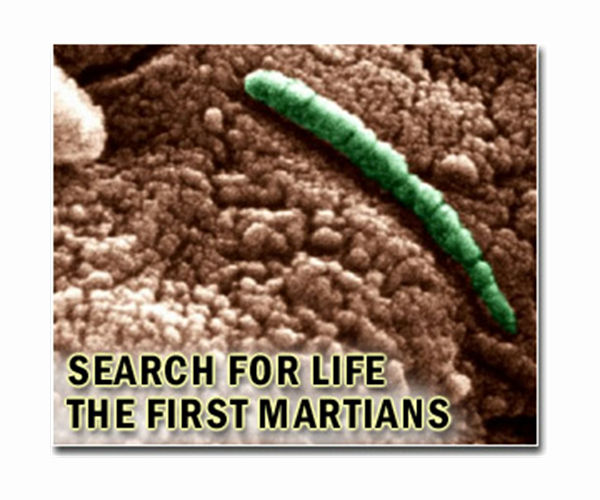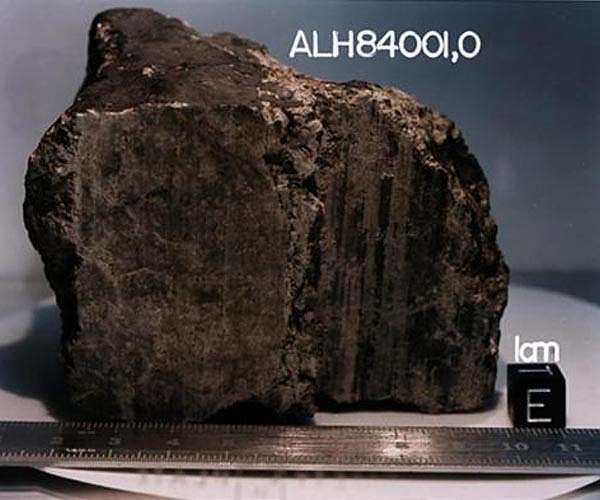Western geologists test instrument for Mars rover mission in search for life
by Clarence Oxford
Los Angeles CA (SPX) May 30, 2024
The search for life beyond Earth drives space exploration, and the discovery of clay minerals on Mars continues to captivate scientists. Clay formation, linked to rocks interacting with water, provides insights into the past habitability of Mars.
Western planetary geologists Livio Tornabene and Gordon Osinski lead an international team to study clay formation on Mars. Supported by a three-year Canadian Space Agency (CSA) FAST grant, the researchers contribute to the European Space Agency’s ExoMars 2028 Rosalind Franklin rover mission.
Tornabene and Osinski are co-investigators on the PanCam camera and the Enfys spectrometer for the Rosalind Franklin rover. The Enfys spectrometer, named after the Welsh word for ‘rainbow,’ is among several instruments on the rover, set for a 2028 Mars mission to identify and determine the origin of surface materials. PanCam, a panoramic camera suite, will work with Enfys to provide visual and mineral information.
The Enfys spectrometer, led by Matt Gunn from Aberystwyth University and Peter Grindrod from the Natural History Museum in London, replaces the Infrared Spectrometer for ExoMars (ISEM). It measures wavelengths of electromagnetic radiation that interact with rock samples.
“The goal of this project is to better ascertain the exact role that water has played in the formation of clay minerals on Mars,” said Tornabene, an Earth sciences adjunct professor and research scientist. “Water on Mars and its role in the Red Planet’s formation remain hotly debated topics. There are clay-formation scenarios that do not require abundant surface water, through impact cratering for example, so answering these questions are key to determining early Martian conditions.”
The team will test the Enfys spectrometer for mission readiness using simulated Mars missions at three clay-bearing field sites on Earth over three years: a meteorite impact site, a volcanic site, and a surface sedimentary weathering site.
Each field site was evaluated by Western-trained planetary geologist and clay mineralogy expert, Matthew Svensson, who co-developed the CSA proposal and is a co-investigator on the project.
“Each simulated Mars mission will be followed by laboratory analyses of samples of clay-bearing rocks observed in the field by PanCam and Enfys,” said Svensson, a former postdoctoral student at Western now a geologist with Geologic AI. “These laboratory analyses will validate the data collected by the emulators during the simulated missions, enable optimization of future Enfys field tests and improve readiness for exploring the Oxia Planum region of Mars.”
Oxia Planum, near the Martian equator, was chosen as the landing site for the 2028 ExoMars Rosalind Franklin rover mission due to its safety and extensive clay-bearing surfaces. However, the exact conditions of clay formation on Mars remain contested.
“Our results will contribute to addressing the ExoMars program objectives, which are key to achieving mission success,” said Osinski, an Earth sciences professor. “This project serves to train Canadian students in planetary exploration mission-related expertise, enabling Canada’s ongoing participation in future missions. It also aims to strengthen Canada’s international partnerships and hopes to engage the public in the upcoming Mars rover mission, fostering more excitement and interest in space exploration.”
“This project will provide us with a valuable opportunity to test Enfys alongside PanCam to detect and characterize clays,” said Gunn, Enfys principal investigator. “As Enfys is a late addition to the mission, we have a lot of work to do in learning to use the instrument to maximum effect, and this project will provide a great opportunity to try things out and feed back into the development for the instrument, its data processing pipeline and the plans for how we will operate it on Mars.”
Related Links
Western University
Mars News and Information at MarsDaily.com
Lunar Dreams and more



